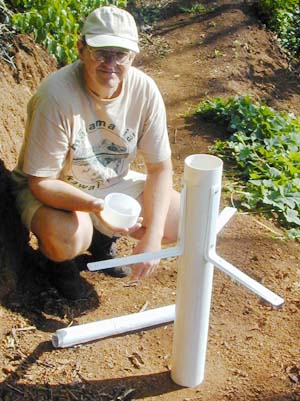|
To call Kawai Nui a marsh is to imply that soils are saturated with water all or much of the time. Typically, a marsh consists of wet soils supporting growths of specially adapted herbaceous plants (in swamps, the dominant plants are woody trees). There may be open bodies of water present when the site is seasonally flooded, or these ponds may represent depressions too deep to be easily colonized by the emergentA vegetation. The sequencing and patterning of open water versus vegetation covered areas is important to the ecology of a marsh for the reason that many of the animals that inhabit wetlands are dependent upon one or the other environment (e.g., most adult fishes usually require open water), or even utilize especially the boundary between open water and vegetation (e.g., waterfowl use open water to travel and
|
stay safe from predators, while feeding and nesting in vegetation). In some places, larger bodies of open water would be regarded as distinct ponds or lakes, with vegetated, shallow water margins comprising the marshland.
Vast parts of Kawai NuiB today are covered by a variable depth of water. However, most of this "lake" is hidden beneath floating vegetation. In some areas, the vegetation is of species that live and grow floating on the surface of water (e.g., water hyacinth; see Photo 1), but over most of Kawai Nui, the vegetation consists of plants rooted in organic soil, forming a mat of living and dead plant matter. This mat floats on water or on a sediment slurry.
|
|
The gross layers of the Kawai Nui system are described under geology of the marsh. Links there lead to details gleaned by diligent studies of Joe Moye and his students at Hawaii Pacific University from two of the three layer sequences present (i.e., upper peat, lagoon mud, and lower marine sediment). In this section, we discuss the physico-chemical interactions between the water of the marsh and essentially the soil layer. The soil consists of an upper, root-bound organic layer (an incipient peat) and underlying material that is peat in various stages of decay, merging into sedimentary or alluvial deposits. In some areas, the root-bound surface organic layer merges directly into saturated clay. Because of the high organic content of the peat and root-bound layers (soil O horizon), conditions develop that result in this layer physically separating from underlying mineral dominated material, and the intervening gap becoming filled with water or mud slurry that buoys up the organic layer. Where the mat separates and floats on water, where it floats on mud slurry, and where its layers do not appear to separate may be related to successional factors in the gradual transformation of this former lagoon to land. But there also may be seasonal and longer term influences related to groundwater inputs to the system.
We are very interested in the possible relationships between what might be interpreted as marsh successional stages and observable differences in the plant-soil-water interface. If such relationships exists, understanding them would have implications on marsh restoration efforts.C However, mapping and plotting soil and vegetation changes over time for the entire 800+ acre marsh would be a difficult undertaking. In order to gain a basic understanding of the phenomenon described, two representative "transect" trails were constructed, beginning in early 2002, out from the Kawai Nui shoreline at Na Pohaku o Hauwahine. Along each trail, a series of mat penetrating devices (Photo 2) was installed, separated at variable intervals averaging roughly 50 m. The selected transects were chosen to represent two kinds of areas thought to characterize Kawai Nui: Transect "A," an inland wet meadow and Transect "B," a vegetation-mat covered "lake." Installed, the devices were called wells, which they basically resemble.
|

Photo 2
One of the PVC pipe devices constructed by Robert Moye to provide access through the vegetation mat at Kawai Nui Marsh for water level and water quality sampling. Each pipe is 4 inches in diameter approximately 1 m (3 ft) long. Installed, the arms lay on the vegetation mat surface
Page 2 - Data
|

